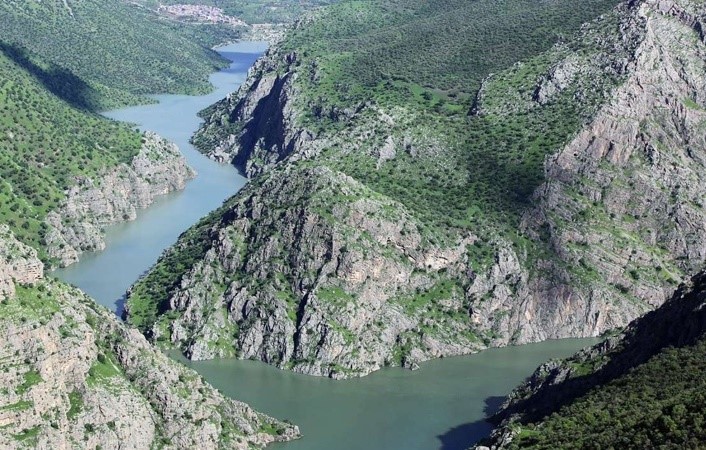Sirwan is the most important and famous river in the Hawraman region of both East and South parts of Kurdistan which has a relatively long and winding road. This river originates in the Razaw and Mariwan in the East part of Kurdistan and after the joining of the two rivers Qshlaq and Gawaro passes through the northwest of Lhon Hawraman in Kermashan province and reaches the Khurmal Valley and goes to the South part of Kurdistan. It flows into the Darbandikhan Lake Dam in the southern part of Kurdistan. In Iraq, the river is called the Diyala River and flows south of Baghdad into the Tigris River bringing it closer to the Euphrates River.
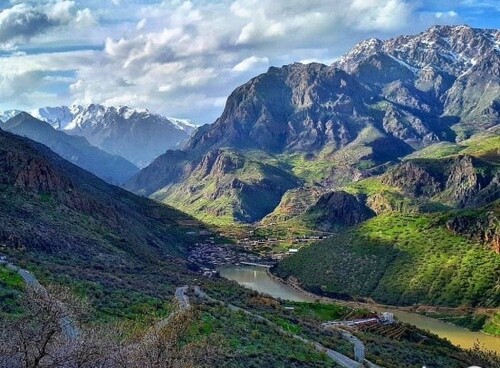
However, for the people of this region, Sirwan is not only a natural phenomenon and a river but also has a historical, social, and political aspect. In fact, this river has been the center of life and culture in Hawraman and many cultures and traditions have been formed around this river. Many historical and linguistic monuments have been created in many parts of the river. For example, the spring of Bil is located a short distance from the Sirwan River, which may have taken its name from the ancient Babylonian water god Bel. This source has significant cultural and historical importance for the people of the Hawraman region and has entered the language, literature, poetry, and religion of the people of the region.
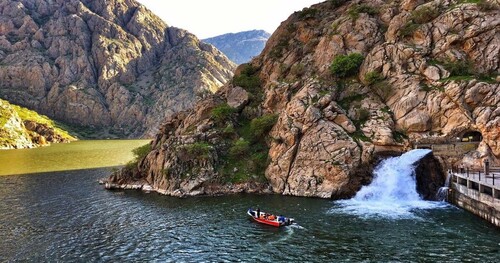
As far as ancient and prehistoric history is concerned, many remains show the importance of the banks of the Sirwan River as the first stages of settlement history. For instance, “Maraw Knache” (meaning: Girl Cave) has a great history behind it, with products from 40000 years ago found there. Another historical site is the Barda Mar area in the village of Rwar, where a prehistoric tomb has been found.
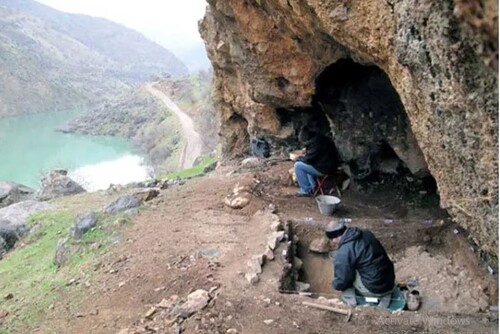
In the cultural field, it is worth mentioning that in the fourth century, the Yarsan religion (Ahl al-Haq) was established by Shakhushin along the Sirwan River in the fourth century AH. In the eighth century, Sultan Sahak developed it and now has his tomb on a mountainside near the river. It is located on a mountain near this river. During the Russian invasion of Iran, the Sirwan River was also said to have been a place where women drowned for fear of being raped by Russian soldiers. In contemporary Kurdistan history, Sirwan reminds us of the history of the struggle of the Peshmergas of Komala's Shwan Corps who drowned in the Sirwan River, which has had a special reflection in Kurdish songs and literature.
The length of this river and its age have led to a shared lifestyle around this river and created a special cultural cohesion between the surrounding towns and villages. The name Sirwan has become a special Kurdish name that is reflected in the cities of Saqqez, Mariwan, Sna, Kermashan, Ilam, and other cities and villages in the southern part of Kurdistan. Also, several ecological-environmental metaphors have been created in the interaction between this river and the inhabitants of the region, all of which together have formed a unique language in terms of ecology, bio-economy, and culture in Hawraman in East and South parts of Kurdistan. For example, if a person is a skilled swimmer, he is said “Arkhavani Surawa Prowa” (meaning: He crosses the Red Arkhawan). This means that at the beginning of spring and the blooming of the red arkhawans on the banks of the Sirwan, the water is at its highest level.
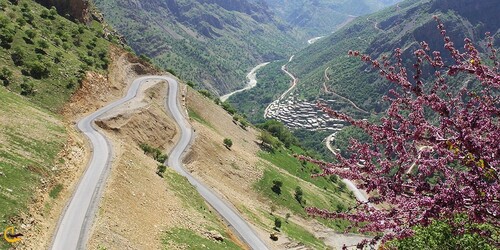
Also, a large part of the livelihood of the people of both the eastern and southern parts of Hawrama depends on the Sirwan River which has created a special livelihood for the surrounding residents. The surroundings of the river are ideal for the growth of various species of fish and birds and have given it a special beauty. In addition, the Sirwan River has led to the creation of special horticulture and economy of this region, such as the pomegranate gardens of Hawraman. The resorts around the river have been a source of life for thousands of years.

Unfortunately, despite all this valuable heritage and culture of the Hawraman and Sirwan region, since many years ago, due to the extensive project of building dams on the course of the Sirwan River has been destroyed or is in the process of destruction. In fact, the dams of Darian, Azad, Qshlaq, Gawshan, Sulaiman Shah, etc. are among the dams that have been built on the Sirwan River in less than 10 years in two provinces of Kurdistan and Kermashan in the East part of Kurdistan. The construction of these dams, in addition to the flooding of the historical monuments on the banks of the Sirwan, has caused long-term environmental, social, and economic impacts on the people of the region.

